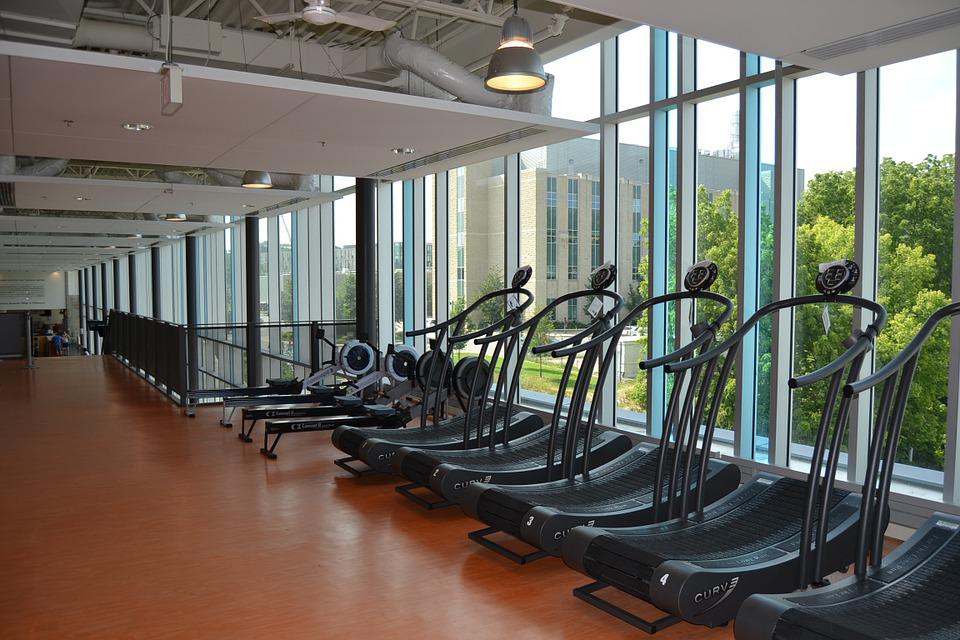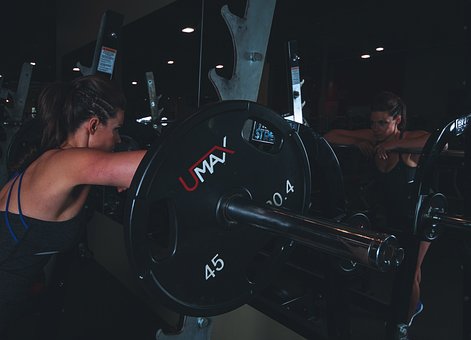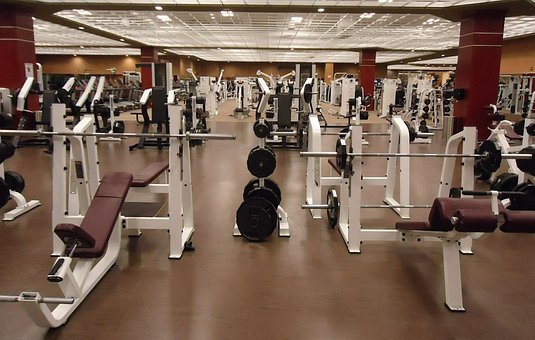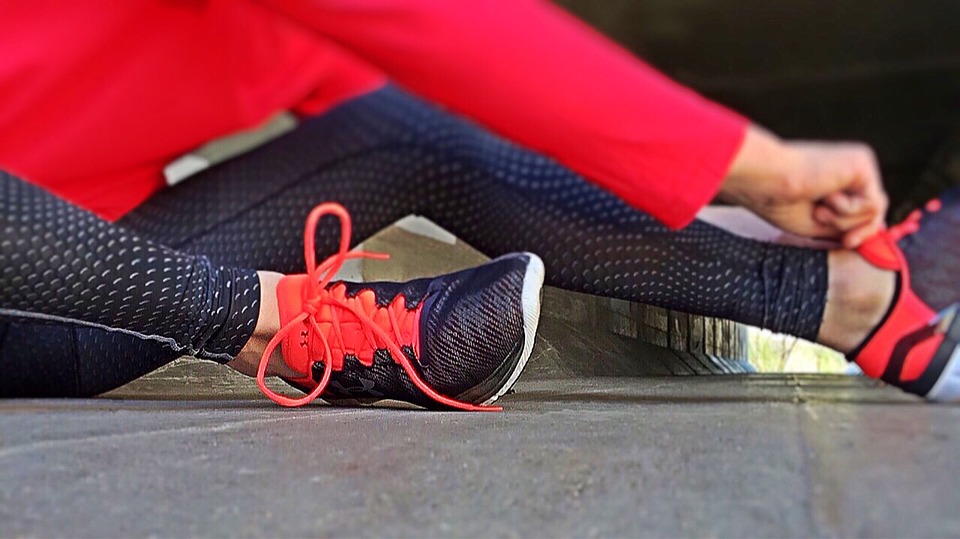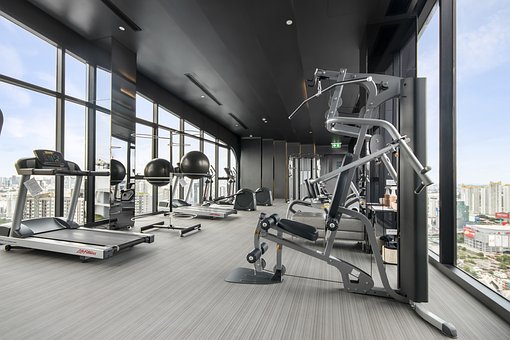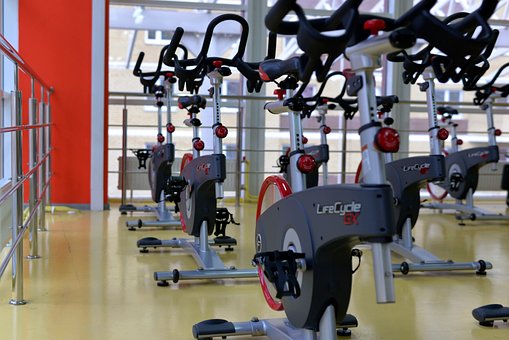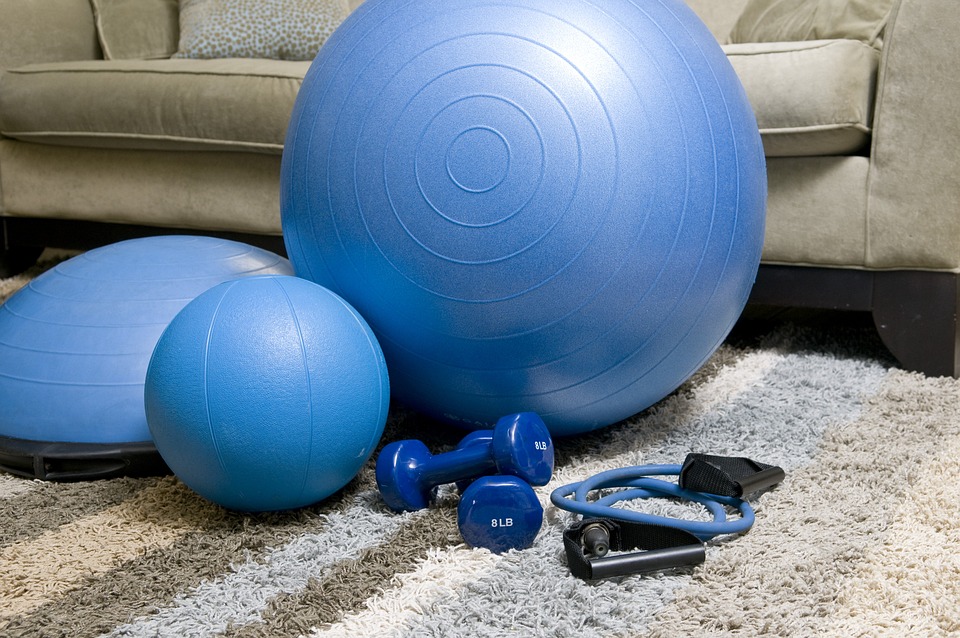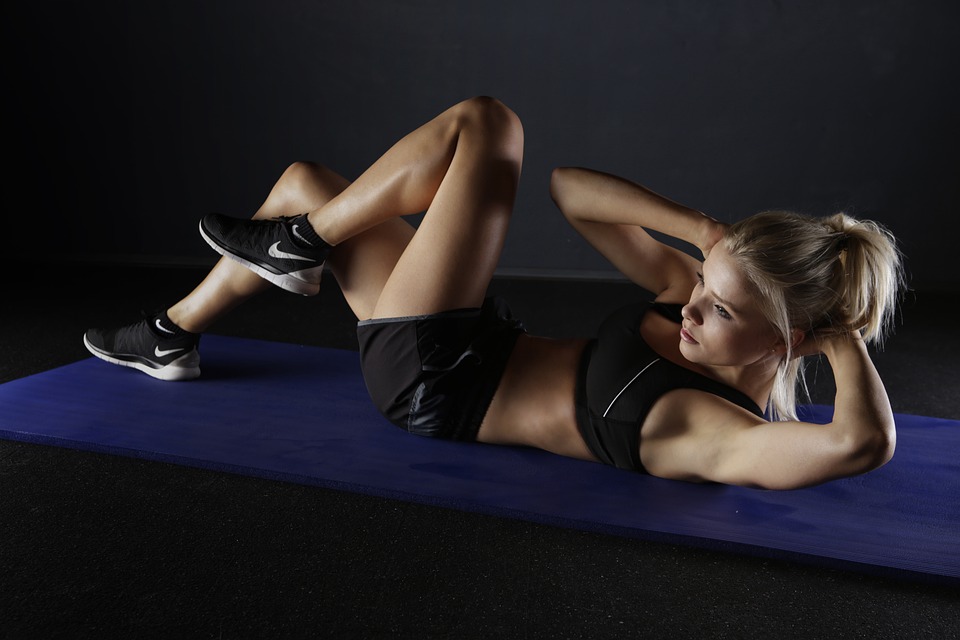
As gyms globally close as a result of Covid-19, numerous individuals are being forced to work out from the comforts of their homes. People are scared that their toil at the gym will be for nothing and fear their muscle will be gone.
This idea is founded on the assumption that bodyweight exercises done in the comfort of one’s home are inadequate for gaining muscle mass.
However, fortunately, this notion is wrong.
There is compelling proof that bodyweight exercises are just as successful at building muscle as utilizing weights.
Why Can Bodyweight Exercises Build Muscle Just As Effectively as Weights?
In order to address this, we must provide a concise delineation of the motivation behind muscular development.
Research has determined that the main cause of a rise in muscle size is mechanical tension in the body. Mechanical tension includes both active tension and passive tension.
The muscles generate their own power when contracted, which is known as active tension. People who understand muscle anatomy can comprehend the motion of myosin moving along actin molecules.
The force produced by the extending of titin (which is a part of muscle fibers) and the extracellular matrix (which encases the muscle fibers) is referred to as passive tension.
Receptors within and encompassing the fibers of muscles feel mechanical tension and activate a consecutive chain of events that, in the end, cause muscle growth.
It is not only weights that involve both passive and active tension.
Passive tension relates to the particular exercise. Some exercises stretch the working muscles more than others. In addition, when passive and active tension are both being used, it seems to increase the amount of muscle growth.
Exercises in which the most difficult point of the exercise coincides with the power point should be especially advantageous for developing muscles. For example, the muscles are extended during the bottom part of the bench press and squat, but at the same time, they have to put forth a lot of tension since that is the most challenging part of the exercise.
Exercises that you do not do with weights can still help you reach your fitness goals, such as the squat and the push-up.
But what about active tension?
The muscle fibers generate the power known as active tension. Ultimately, maximal muscle growth can be attained when we create a high degree of active tension, or recruit a large amount of muscle fibers.
We know muscle fibers are recruited in a progressive sequence:
When minimal power is needed, fibers that produce less power and force are primarily used.
A stronger effort is needed which will result in quick contractions and the stimulation of more muscles with the ability to produce more power.
You may be led to believe that high resistance is needed to engage both the slow-twitch and fast-twitch muscle fibers.
It is accurate that heavier weights easily engage the majority of a muscle’s fibers due to the fact that the needed amount of force is already considerable. However, this is ultimately inconsequential.
When we use light resistance, we can target most muscle fibers by performing to the point of failing (the stage where we cannot do any more reps): the strength needed increases as we get to failure, so we need to engage our quick-reacting and forceful fast-twitch muscle fibers.
In this way, we can attain strong muscular tension with both light (comparable to body mass) and heavier weights, enabling maximum physical expansion.
Indeed, longitudinal research assessing muscle growth supports this. In a 2017 meta-analysis, Schoenfield et al. concluded that when reps are done to exhaustion, muscle growth can still be achieved with weights ranging from 30% to 85% of the one-rep maximum, or between 5 and 40 reps.
Making use of this for bodyweight exercise would mean that we choose an exercise that we can perform until reaching the point of incapacity in the 5 to 40 repetitions range.
We will eventually explore that there are numerous bodyweight activities that we can accomplish this aim, no matter what our workout experience is.
Before continuing, it needs to be stressed that an inadequate amount of resistance can stop your muscles from developing as much as possible. In 2018, Lasevicius et al. carried out a study that suggested that resistances ranging from 40% to 80% of one repetition maximum (1RM) were more beneficial to the growth of muscle than a resistance that equaled 20% of 1RM.
A standard amount of resistance for this exercise is around 20% of your maximum strength for one single repetition, which normally requires you to do at least 60 repetitions in order to reach failure. Hence, movements that do not allow you to do more than 60 repetitions are probably not ideal for overall muscle building, likely because they don’t create maximum active tension.
The threshold may even be lower than 60 reps. For our safety, it is a good idea to pick bodyweight exercises that enable us to reach exhaustion within a range of 5 to 40 repetitions.
Using Movement Patterns to Select Bodyweight Exercises
It is evident that bodyweight exercises are equally potent as those conducted with weights, so now let’s talk about developing your personalized workout plan.
There are several strategies you can adopt to choose your workouts. Nevertheless, I believe the most straightforward approach to reaching this goal is to choose activities according to movement patterns.
There are a variety of methods for dividing fundamental movement patterns. Below is the one I feel is most suited for building muscle (note, I’ve also detailed the muscle groups trained beside each movement pattern):
- Horizontal press: chest, triceps, deltoids, and abdominals
- Horizontal pull: back, biceps, forearms, and abdominals
- Vertical press: deltoids, triceps, and abdominals
- Vertical pull: back, biceps, forearms, and abdominals
- Knee dominant: quadriceps, glutes, adductors, and calves
- Hip dominant: glutes, hamstrings, and calves
It is advantageous to include exercises that use both horizontal and vertical angles when targeting the same muscle group because then the various areas of the muscle can be more effectively engaged.
When you choose routines that follow these movement patterns, most of the muscles in your body will be worked out.
Individual muscle groups may not receive enough stimulation, necessitating the implementation of exercises that address one muscle group specifically. These particular exercises are performed with body weight only.
The Best At-Home Bodyweight Workouts
Leg Day
At first look, you may groan internally when viewing the numerous lunges and squats in this exercise routine. We know that it may not be the most inventive strategy, though using straightforward methods is typically the better choice. It’s clear that lunges and squats are efficient exercises, so why change something that’s reliable? It is necessary to perform 400 repetitions in order for muscles and strength to increase. Don’t forget that the tension you are creating cannot be generated by the use of weights, so you need to concentrate on the number of sets and repetitions.
The Workout
Two rounds of:
- 50 bodyweight squats (conventional stance)
- 25 bodyweight reverse lunges (each side) — It’s okay to alternate.
- 50 bodyweight squats (wide stance)
- 25 bodyweight lateral lunges (each side) — It’s okay to alternate.
- 25 jumping jacks
- 25 glute bridges
This certainly appears to be a significant amount. If you have the energy and are willing to work hard, try a third round. Two rounds will total 400 reps. Three rounds will total 600 reps. You do not have to work on a timeline, so if you want to take pauses during your work, that is okay.
Training Tips
- For the squats, the lunges, and the glute bridges, drive through your heels. The balls of your feet keep you balanced but should not take any of the force during a rep.
- During the eccentric motion of the squat and the lunge, try to grip the floor with your foot. Then on the concentric motion drive through the heels. Gripping the floor with your foot can help balance and keep your knee in proper alignment during the movement.
- Keep your core engaged — imagine you’re wearing a weight belt that is holding your core taught.
Push Day
Going through any sound workout routine that includes bodyweight exercises would not be complete without the inclusion of pushups – which is a good thing. Just make sure you’re not doing them wrong.
Exercisers who usually utilize a bench or power rack to train chest and shoulder muscles might not have the correct push-up form in their workout routine. By engaging in push-ups on a regular basis, you can maintain healthy shoulders, rectify muscular imbalances, and improve your strength and abilities.
The Workout
4 rounds of:
- 8 push-Ups
- 20-second plank
- 8 bodyweight skull crushers
- 4 diamond push-ups
- 8 bodyweight skull crushers
- 20-second bear crawl static hold
- 8 push-ups
This pyramid routine involves a long period of exercising with tension, so you should make sure to take a break of three minutes between each round. Loosen up your wrists, be sure that your shoulders are not tense, and get your breathing under control.
You will accumulate eighty push-ups of the standard and diamond varieties when you finish this exercise routine. If you did each exercise accurately, you should expect a great workout and to feel worn out. Again, there is no time limit. If necessary, pause for breaks but aim to finish a whole cycle before taking a breather.
Training Tips
- Any time you perform a push-up or any of its variations, keep your shoulders pulled down and back. A good way to cue this is while in a push-up position. Imagine trying to touch your rear delts to your tailbone.
- At the same time, engage your core by trying to tilt your hips towards your chest. This position should remain solid throughout the entire movement.
- Also, don’t flare your elbows during a pushup. It can harm your shoulders and waste your energy.
The “Core Clock” Workout
You might be tempted to skip over this exercise routine because it emphasizes your core, but it is certainly worth a try. You will perform the motion steadily and with total limb and core strength, preparing your physique for multiple hard repetitions of squats and deadlifts. If you don’t enjoy doing abdominal exercises, the “Core Clock” workout is still worth the effort.
Visualize a big clock face painted on the floor that is big enough to stand in. At each number on the clock, you do a certain number of seconds or repetitions of an exercise before progressing to the next number.
Let’s use the plank as an example. Imagine you are in a plank. That’s the 12 o’clock position. Maintain the plank for 12 seconds, then while keeping your form, have your entire body so your head is in the direction of 1 o’clock. Hold there for one second. Second, position yourself at two o’clock and remain still for two seconds. Keep doing this until you have gone completely around the clock. Making a complete circle around the clock is referred to as a “primary timekeeper.”
The Workout
3 rounds of:
- “Core Clock” mountain climbers (one rep is a mountain climber with each leg)
- “Core Clock” plank to pikes (paper plates or socks under your feet can make it easier to slide if you don’t have core sliders)
- Rest two minutes
- “Core Clock” ab rollouts (if you don’t have an ab roller, paper plates or socks under your hands will work)
Taking a break during a round of play is necessary because the core clocks are more complicated than they appear. You need to make sure that your core muscles stay activated during the entire exercise. Make your lower back the indicator for when you need a break from what you’re doing. When you notice your lower back sinking in, you are aware that your core isn’t strong and stable. If the difficulty persists, take a break until you can address it, and then continue.
Pull Day
If you don’t have any weights or a pull-up bar in your house, you won’t be able to do the traditional type of ‘pulling.’ However, you don’t have to forget about your back and the muscles located on your backside either.
You don’t need to lift a heavy load to stimulate your lats, rear deltoids, and glutes. Be sure to keep perfect posture throughout each repetition.
The Workout
Four rounds of:
- 20 reverse snow angels
- 20 wall slides
- 15 single-leg bodyweight RDLs (per side)
- 20 supermans
- 15 inchworms
- 10 wall walks
Try to take as few breaks as you can between reps, sets, and rounds, but each repetition should be done slowly and with great care. No action should be taken quickly or hurriedly. If possible, do the tasks slower than you believe is necessary for an added challenge.
Training Tips
- Especially when you’re used to pulling hundreds of pounds off the ground, these types of deliberate, “small” motions can seem all too easy — until you start racking up the rep counts. And until you realize just how much mental focus it takes to keep every single rep crisp and clean. Commit to finishing your sets with just as excellent form as you started them with.
Strength-Mobility Bodyweight Challenge
Your physical strength isn’t an indicator of your range of movement; likewise, your range of movement does not necessarily reflect your muscular strength. This exercise program is intended to increase your flexibility and bolster your strength in manners that you may not usually practice when weightlifting.
By operating to enhance flexibility and strength without any tools, you can put together yourself for success the next occasion you prepare to execute a barbell lift or even a squat. Furthermore, you will gain insight into yourself and what your deficiencies are.
The Workout
Three rounds of:
- 5 world’s greatest stretch (per side)
- 10 inchworms with pushup
- 15 beast holds with toe tap (per side)
- 10 crab reaches (per side)
- 30-second deep squat
- 30-second tricep pushup hold (at 90 degrees)
Training Tips
- Don’t rush any of these movements — if they’re being pesky and giving you trouble, slow them down and practice them until you can complete your reps with excellent form.
- Can’t quite complete your holds for 30 seconds? Break your sets into as many chunks as you need to to complete your time with good form.


